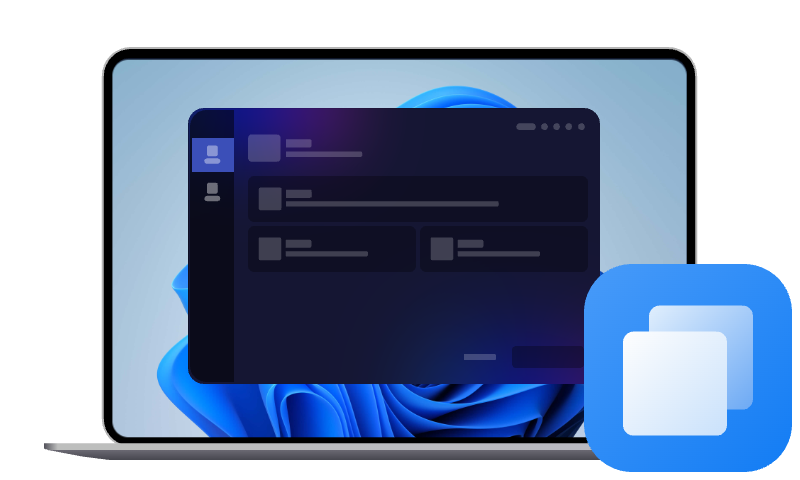Cloned Hard Drive Shows Wrong Size? Fix It Now!
If your cloned hard drive shows the wrong size, you're not alone. This guide breaks down the causes and fixes to ensure a successful and accurate clone.
Why cloned SSD showing wrong capacity?
After cloning a hard drive or migrating your system to a new SSD, you might expect everything to match up perfectly—including the total available storage. So why is your cloned SSD showing the wrong capacity? Here are the most common causes:
✅Unallocated Space After Cloning
If you're moving from a smaller drive to a larger SSD, the leftover space on the destination may remain unallocated—essentially invisible to the operating system until you manually expand the partition.
✅Cloning Only a Single Partition
If you accidentally cloned just a single partition (like the C: drive) instead of the entire disk, system and hidden partitions might be missing—and so might the rest of your drive’s capacity.
How to fix cloned hard drive shows wrong size
According to the causes, there are two methods to help you resolve the SSD not showing full capacity after clone issue.
Way 1: Resize partitions with Disk Management
The simplest way to fix a cloned drive that shows the wrong size is to manually extend the primary partition using Windows' built-in Disk Management tool. Please follow the instructions below:
1. Press Windows + X and select Disk Management.
2. Look for your cloned drive. You’ll likely see a large block labeled “Unallocated” on the cloned drive.
3. Right-click on the partition that precedes the unallocated space and select Extend Volume.
4. When the Extend Volume Wizard opens, click Next.
5. Enter the size of the unallocated space to add to your target partition and click Next. By default, it will use all the available unallocated space—leave it as-is unless you want to create additional partitions.
6. Click Finish to complete the process. You may need to restart your computer to see the updated space in File Explorer.
Note: Disk Management only allows you to extend a partition into adjacent unallocated space. If the unallocated space is not next to your main partition, try a third-party partition manager like AOMEI Partition Assistant.
Way 2: Re-clone the drive with reliable cloning tool
To avoid unallocated space after cloning, you may pick a powerful disk cloning utility that handles partition resizing and alignment automatically during the cloning process. AOMEI Cloner is a highly recommended option.

- Full Disk Clone: Duplicate all contents of your hard drive—including the OS, settings, applications, and personal files.
- Single Partition Clone: Copy only a specific partition if you don’t require a full drive copy.
- OS Clone: Migrate Windows and critical boot data—ideal for upgrading to a smaller SSD.
- Edit Partitions: Adjust partition sizes during the cloning process to better utilize available disk space. You can also convert the partition style of the destination disk if you want.
- SSD Alignment: Automatically aligns partitions to the optimal boundaries for SSDs, ensuring maximum read/write performance and prolonging the lifespan of the solid-state drive.
Download AOMEI Cloner now and follow the instructions below to clone HDD to SSD without unallocated space left:
1. Connect the target SSD to your computer. Make sure the target disk is backed up or empty—it will be overwritten.
2. Install and open AOMEI Cloner. Navigate to Clone > Disk Clone to clone all partitions on a disk.
3. Select the source disk (the HDD you want to clone from) and the destination disk (the SSD you want to clone to).
4. To avoid unallocated space after cloning to a larger drive, click on Edit Partitions and then choose from the two options below:
- Add unused space to all partitions: The program will automatically add unallocated space to all existing partitions.
- Manually adjust partition size: You can click on each partition and resize it by dragging the side bar.
5. Check SSD Alignment to optimize SSD performance. Then click Start Clone to launch the cloning process.
6. Boot from the cloned drive.
- Once the cloning is done, shut down your computer.
- Replace the old drive with the new drive (or change the boot order in BIOS).
- Boot from the newly cloned drive and verify that the full size is recognized.
Bonus: Best practices for drive cloning
Cloning a drive isn’t just about copying files—it’s about replicating everything exactly, down to the boot sectors and partition layout. Follow these best practices for optimal results:
1. Use Reliable Cloning Software
Choose a reputable cloning tool that supports sector-by-sector cloning and partition resizing. AOMEI Cloner is one of the best choices. Always make sure you’re using the latest version, as software updates often fix bugs and add compatibility for new hardware.
A reliable disk clone software can help you easily clone system, disk, partition with secure boot.
2. Match the Right Clone Type to Your Goal
Understand what kind of clone you need:
- Disk-to-disk clone if you're replacing a drive entirely.
- Partition-only clone if you're migrating just a specific OS or data volume.
- Sector-by-sector clone if you need a forensic-level copy (usually unnecessary for typical use).
3. Check Source Disk Health Before Cloning
Cloning a failing or corrupted drive can replicate problems onto the target. Before cloning, it is suggested to run CHKDSK on your source disk.
4. Allocate Adequate Space on the Destination Drive
Your target drive should be the same size or larger than the source drive. If you’re moving to a smaller drive, make sure:
- There’s enough used space to fit.
- Your cloning software supports intelligent sector copying (i.e., copies only used data).
5. Disconnect Other Drives to Avoid Confusion
Having multiple drives connected during cloning can lead to accidental overwrites. Safeguard your data by:
- Labeling your drives clearly.
- Disconnecting all non-essential drives during the process.
- Verifying source and destination before confirming the operation.
Wrapping things up
If your cloned hard drive shows wrong size, don’t panic—this is a common issue caused by unallocated space or improper cloning settings. In most cases, the drive’s full capacity can be restored using tools like Disk Management.
To avoid the capacity issue after cloning, it is suggested to clone your hard drive with smarter software such as AOMEI Cloner. It offers all-around cloning solutions, including auto-resize options. Why not give it a shot?

